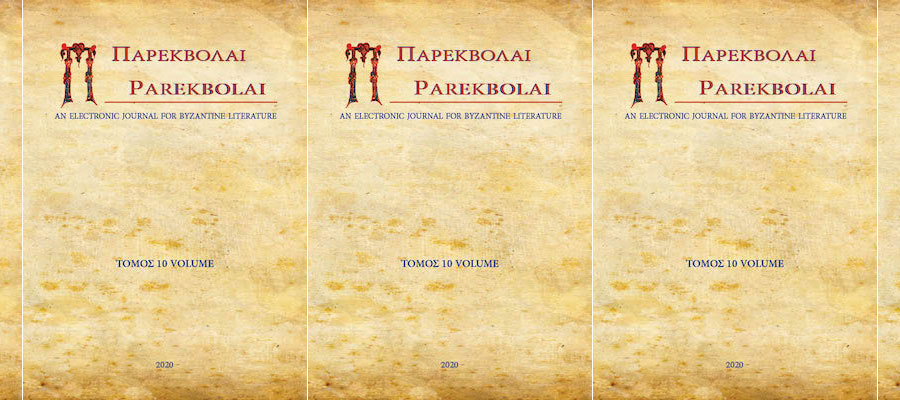Parekbolai. An Electronic Journal for Byzantine Literature, volume 10 (2020).
CONTENTS
Reconstructing the Hagiographical Oeuvre of Michael, Monk of Stoudios, Archimandrite of Dalmatou and Patriarchal Synkellos (9th/10th centuries)
Dirk Krausmüller
This article seeks to reconstruct the hagiographical oeuvre of a little known Byzantine author, through analysis of texts that in the manuscripts are attributed to ‘Michael the Monk’, ‘Michael the Archimandrite’ and ‘Michael the Synkellos’ and of other anonymous writings that display similar stylistic features. It makes the case that Michael lived in the second half of the ninth and the first half of the tenth century and was monk of Stoudios, archimandrite of Dalmatos, and synkellos of Patriarch Nicholas Mystikos.
Nikolaos Muzalon's Resignation from the Patriarchal Throne and Manuel Komnenos as the New Socrates
Konstantinos Chryssogelos
The present paper deals with a 12th-century ‘Platonic’ dialogue between the patriarch Nikolaos Mouzalon, Manuel Komnenos and an unspecified number of bishops, within the frame of a synod that was held in Constantinople in 1151 and led to Mouzalon’s abdication from the throne. Although the unofficial document that records the dialogue purports to be a faithful transcription of the second day of the debate, the abundance of motifs and elements that relate to the contemporary intellectual and literary milieu, as well as Manuel’s somewhat failed attempt to act as a Socrates-like figure throughout the dialogue, pose several questions with regard to the author’s attitude against the emperor and the text’s overall connection to actual events. Both these questions are explored, via the process of close reading and also with the aid of other contemporary or slightly posterior primary sources. In addition, an attempt is made to outline Manuel’s projected image as a master in the use of dialectic and syllogisms, and its evolution through the years of his long reign.
Per il testo dell’ Apocalisse di Anastasia
Luigi Silvano
The Visio Anastasiae monialis, also known as Apocalypse of Anastasia (BHG 1868-1870b), is possibly the most famous Byzantine “Tour of hell (and heaven)” narrative, together with the coeval Apocalypse of the Theotokos. This article proposes a list of corrigenda to Rudolf Homburg’ s Teubner edition of 1903, and offers a philological discussion of selected passages, based on new collations of the three manuscripts used by Homburg and three more manuscripts hitherto unstudied. A proekdosis of the prologue of the redactions BHG 1869 and 1870b is also offered.
